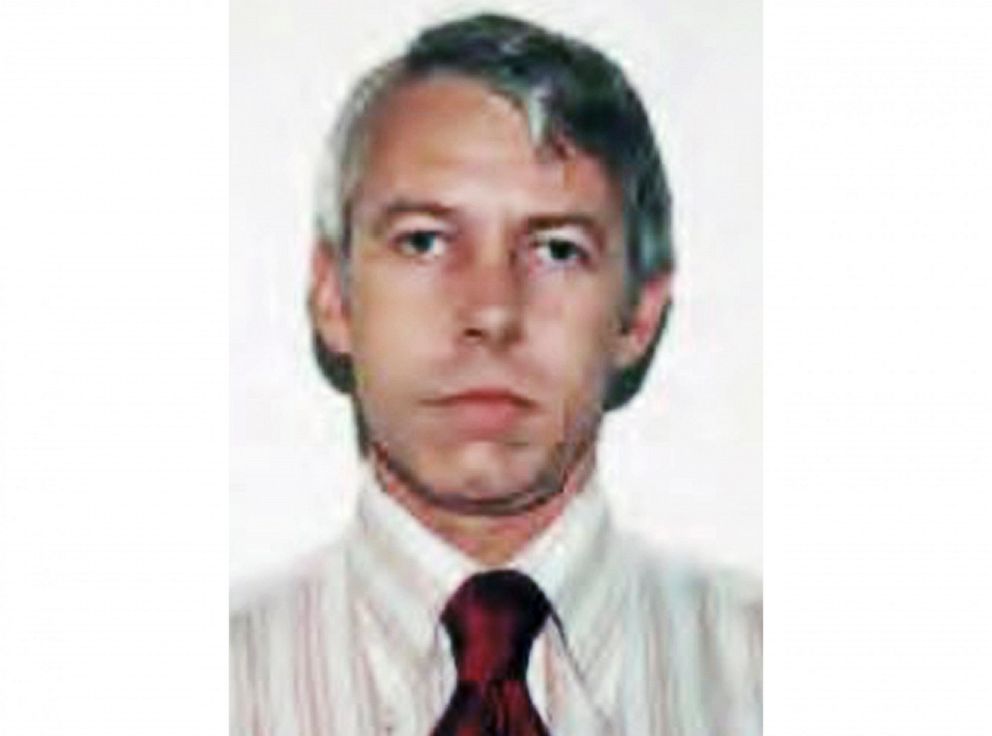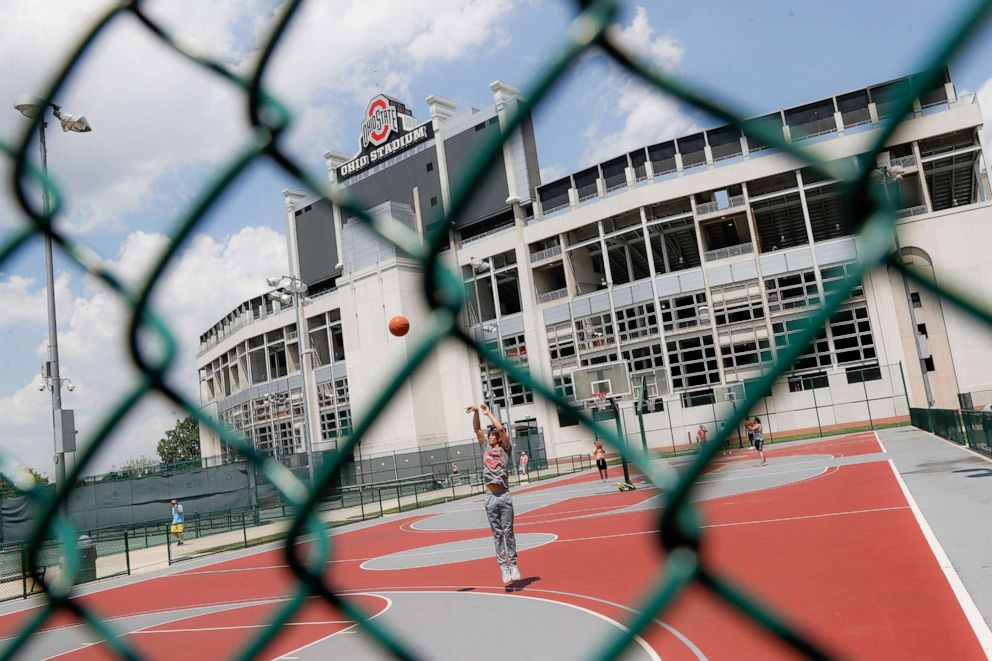Former Ohio State athletes sue school over team physician's alleged sexual abuse
The lawsuit includes 37 former student-athletes.
A group of 37 former Ohio State University student-athletes have filed a Title IX lawsuit against the school for its handling of alleged sexual abuse committed by team physician Dr. Richard Strauss after an independent report detailed how the school handled the allegations over two decades.
Former Ohio State wrestler Michael DiSabato and 36 unnamed plaintiffs who competed on the school's football, wrestling, swimming, gymnastics and volleyball teams brought the lawsuit, which was filed in U.S. District Court for the Southern District of Ohio. All of them competed while Strauss was employed at the University.
Strauss, who worked at Ohio State from 1978 through 1998 before killing himself in 2005, was alleged to have sexually assaulted 177 male students at the school, with many of these occurring in his capacity as team physician in the school's athletic department and as a physician in the school's Student Health Center, according to an independent report released by Perkins Coie LLP on May 17.
The report alleges that university employees knew about Strauss' actions as early as 1979, but "no meaningful action was taken by the University until January 1996" when he was suspended by the school after a Student Health Center patient accused the physician of fondling, according to the report, which said that Strauss was permanently removed from the athletics department and Student Health Center, but as a tenured faculty member was able to retire with "emeritus" status in 1998.
When reached for comment, Ohio State referred ABC News to previous statements made by the school and Ohio State President Michael Drake following the release of the report. In an email to the school about the report’s findings, Drake called the results “shocking and painful to comprehend.”

“On behalf of the university, we offer our profound regret and sincere apologies to each person who endured Strauss’ abuse,” Ohio State President Michael Drake wrote in the email. “Our institution’s fundamental failure at the time to prevent this abuse was unacceptable — as were the inadequate efforts to thoroughly investigate complaints raised by students and staff members.”
Ohio State also said in a news release about the report that it was covering the cost of counseling for individuals affected by Strauss’ alleged actions, and pointed out the school’s new Office of Institutional Equity and programs, such as sexual misconduct prevention education, as actions the university has taken to address sexual misconduct, abuse and harassment.
Strauss allegedly abused the plaintiffs in the lawsuit by groping or fondling their genitals — sometimes for extended periods of time — and performing rectal and anal exams on them, the lawsuit states. Strauss also allegedly sexually harassed students in the locker rooms and showers at Larkins Hall, where some of the university's teams were based,including those for wrestling, gymnastics and swimming, according to the lawsuit, .
Athletes could not avoid Strauss if they needed treatment as he was a physician for many of the school's teams, the lawsuit says.
The lawsuit accuses the school of "funnel[ing] Plaintiffs and other student-athletes to Strauss with assembly-line efficiency, whereupon Strauss cornered and sexually assaulted them." It also alleges that the school "concealed, intentionally ignored, or disregarded athletes’ repeated reports and other widely known information that indicated Strauss was a threat to his male patients.”

Strauss allegedly abused his patients under the guise of performing physical examinations, such as hernia checks, and treating injuries, the lawsuit says. As a result, many of the plaintiffs assumed Strauss was conducting normal examinations and were not able to identify Strauss’ actions as sexual assault, according to the lawsuit.
In cases where the plaintiffs reported Strauss’ alleged behavior, the lawsuit says they were ignored.
“Some of the Plaintiffs and other student-athletes reported Strauss’ examination methods to team trainers — particularly football trainer Billy Hill,” the lawsuit says. “While precise responses differed, the gist was almost always the same: it was not a big deal. Strauss did things his way; Strauss was just being thorough; this had gone on for years. Other benign explanations were offered.”
Fourteen of the plaintiffs in the lawsuit allegedly told Hill about Strauss' alleged actions, but Hill did not tell them the physician’s actions were inappropriate, according to the lawsuit.
In other cases, a 19-year-old former wrestler who says he was sexually harassed in Larkins Hall was told by an assistant coach to "grow up" when he tried to report it, ultimately giving up wrestling and leaving the university, the lawsuit alleges. A 26-year-old football player, meanwhile, says that he heard teammates ask for a different doctor because Strauss was grabbing his genitals, and still nothing was done, the lawsuit alleges.
“Throughout Strauss’ 20-year tenure at OSU, students, student-athletes, and coaches conveyed complaints and concerns to OSU administrators and employees about Strauss’ inappropriate sexual conduct,” the lawsuit says. “Given the magnitude of Strauss’ abuse — involving students and student-athletes he evaluated and treated over two decades — it would be implausible for OSU to claim that it did not know about Strauss’ sexual abuse. Nonetheless, OSU did nothing to address the complaints and concerns about Strauss.”
The lawsuit also claims that Larkins Hall, where male non-athletes and faculty were both allowed to shower with athletes, had "an aggresively voyeuristic culture" and that it had become “a constant source of sexual harassment for the male members of the athletics teams based inside it." Members of the wrestling team reported that non-athletes, some of whom were faculty, had allegedly watched them in the shower, propositioned them for sex and sexually assaulted them, according to the lawsuit, which alleges that the school denied requests by a coach to remove the wrestling team from the residence.
DiSabato had also been “subjected to numerous retaliatory acts” after testifying about Strauss’ actions in March 2018, according to the lawsuit, which says DiSabato was banned from certain facilities on campus by Ohio State Athletic Director Gene Smith, was not allowed to attend the team’s spring football game after purchasing tickets in 2017 and had his social security number posted on social media by university employee Matt Finkes after participating in a television interview.
The plaintiffs are looking for damages for “medical and other expenses incurred as a consequence of the sexual abuse and/or harassment and The Ohio State University’s deliberate indifference; damages for deprivation of equal access to the educational opportunities and benefits provided by The Ohio State University; and damages for past, present and future emotional pain and suffering, ongoing mental anguish, loss of past, present and future enjoyment of life, and loss of future earnings and earning capacity,” the lawsuit said.

The plaintiffs’ attorney, Michael Wright, told ABC News that he expects the number of plaintiffs to increase as he has been “contacted daily by new student athletes” as well as non-student athletes about Strauss. He said the release of the independent report has prompted more of Strauss’ alleged victims to come forward.
The primary goal of the lawsuit, Wright said, is to make sure that what happened to Strauss' alleged victims does not happen to any other student athlete, and that Ohio State puts new measures in place, accepts responsibility and takes care of the people who were affected.



